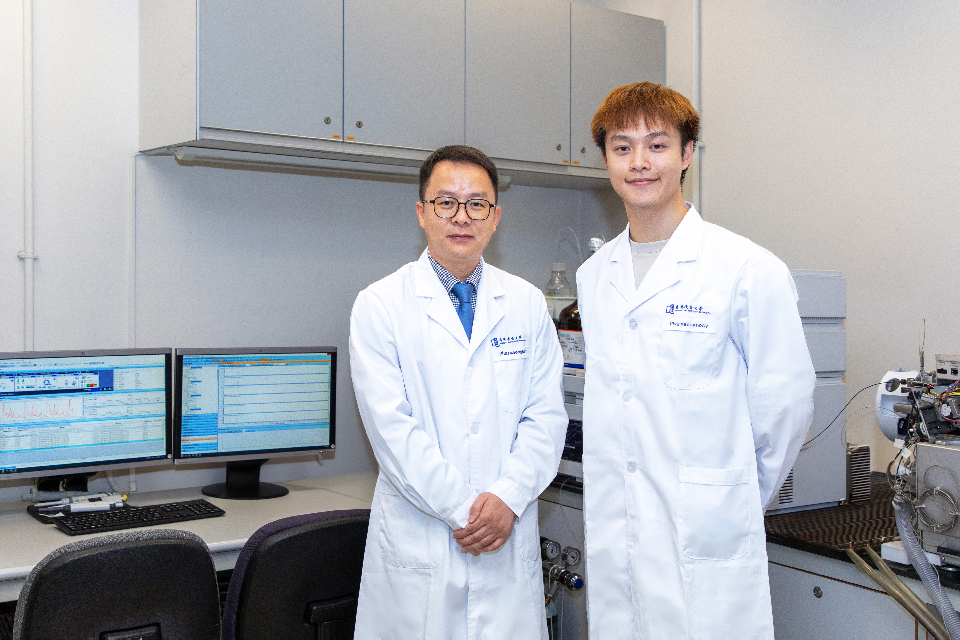Discover HKBU
HKBU develops new approach for accurate and efficient inspection of sulfur-treated food and Chinese herbal medicines
31 Jul 2024


HKBU researchers have developed a new approach for inspecting sulfur-treated food and Chinese herbal medicines, using a chemical marker called tryptophan sulfonate. Adopting a more accurate, rapid, and efficient approach compared to the current standard sulfite test, the study marks a potential advancement in food safety and quality assurance, providing the industry with a robust tool for inspecting sulfur-treated food and Chinese herbal medicinal products. The research findings have been published in the international scientific journal Food Chemistry.
Sulfur treatment, including fumigation and adding sulfites, is a common preservation technique in the food and Chinese herbal medicinal industries. However, excessive sulfite consumption can cause health issues. Even though the sulfite test is currently the most widely used inspection method, it has its limitations - sulfites are chemically unstable, labour-intensive and time-consuming, and prone to false-positive results for foods rich in sulfur-containing components, such as garlic and onion.
In search of a more accurate and efficient testing approach, Dr Xu Jun, Assistant Professor of the Teaching and Research Division of the School of Chinese Medicine at HKBU, and his research team identified a chemical compound called tryptophan sulfonate in sulfur-fumigated samples using untargeted metabolomics. Tryptophan sulfonate is formed when tryptophan, a naturally occurring amino acid in many foods, reacts with sulfite.
Comparative experiments showed tryptophan sulfonate was consistently present in sulfur-fumigated samples but not in non-fumigated ones. This finding demonstrated the potential of tryptophan sulfonate as a specific chemical marker for distinguishing sulfur-treated and non-sulfur-treated food products.
To further evaluate the tryptophan sulfonate test, the team applied it alongside the sulfite test to 50 food and Chinese herbal medicine samples. The results were mostly identical, except for six samples. For garlic, onion, and four other products, the sulfite test gave false positive results due to their natural sulfur content. As garlic and onion are known to contain endogenous sulfur-containing components, it is evident that the positive sulfite test result is not a consequence of sulfur-treatment. Tryptophan sulfonate test is therefore a more reliable approach for detecting sulfur-treatment for food items with intrinsic sulfur-containing constituents.
In a separate experiment, the research team found that tryptophan sulfonate exhibited greater stability over heat and storage, suggesting it serves as a better chemical marker for sulfur-treatment inspection.
In terms of the testing procedure, the tryptophan sulfonate test is also more efficient, with direct ultrasonic extraction taking one hour and mass spectrometry analysis for two minutes. In contrast, the sulfite test requires 2.5 hours of manual work per sample.
Dr Xu concluded: “Our research showed that tryptophan sulfonate serves as a highly distinctive chemical marker, enhancing the accuracy and efficiency of sulfur-treated food and Chinese herbal medicine inspection. It is especially suitable for high throughput screening of large samples size. It demonstrates potential in offering a more cost-effective alternative for the existing test protocol adopted by the industry.”
Moving ahead, the research team hopes to further develop the tryptophan sulfonate test for commercial application.